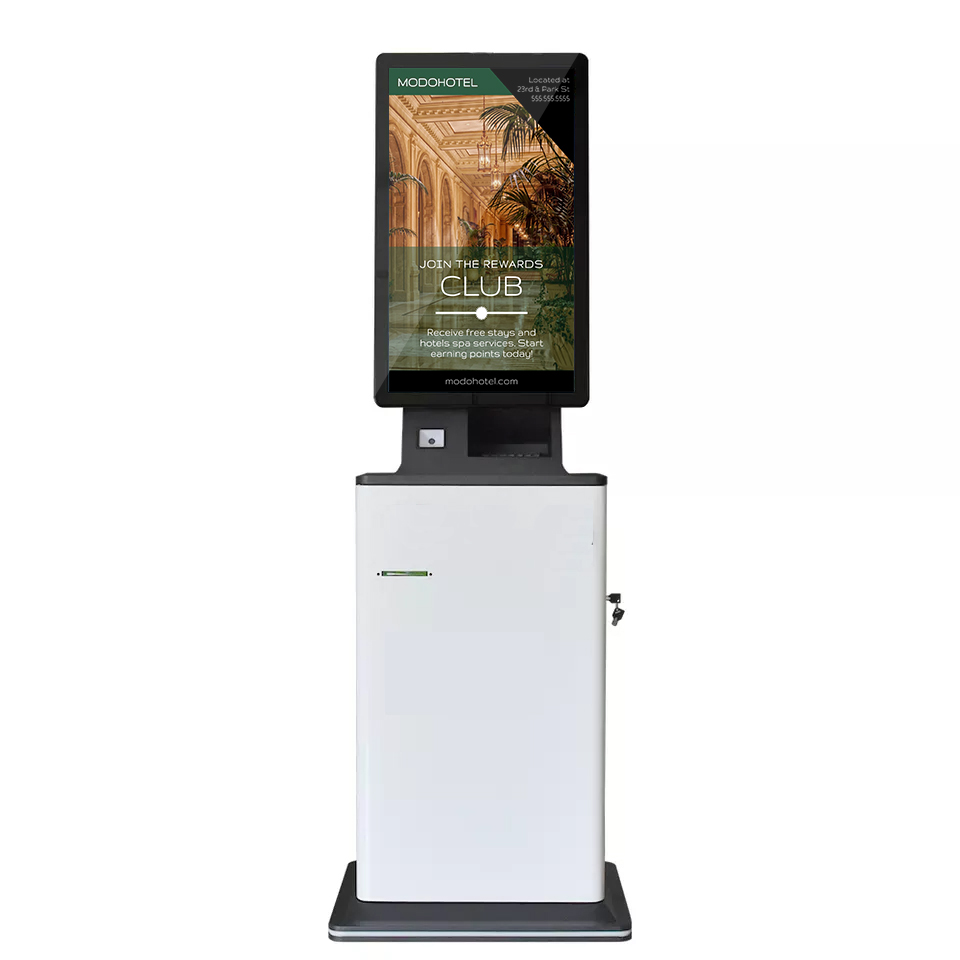
Kiosk hardware components can vary depending on the specific application and functionality of the kiosk. Here are the essential hardware components commonly found in various types of kiosks:
①Display:
Screen: LCD, LED, or OLED screens are used to display content and interact with users.
Touchscreen: Capacitive or resistive touchscreens enable users to interact directly with the kiosk interface.
②Computer System:
Processor (CPU): Central processing unit for executing applications and processing data.
Memory (RAM): Temporary storage for running applications and storing data in use.
Storage (SSD/HDD): Solid-state drives (SSD) or hard disk drives (HDD) for storing operating system, applications, and data.
Graphics Processor (GPU): Handles graphical tasks, useful for multimedia-rich content or applications.
③Enclosure:
Cabinet: Housing that encloses and protects internal components from environmental factors and physical damage.
Material: Typically made of metal or durable plastic, sometimes designed to be vandal-resistant or weatherproof for outdoor use.
④Input Devices:
Touchscreen: Already mentioned for interaction.
Keypad/Keyboard: Physical input for alphanumeric data entry.
Pointing Device: Mouse or trackball for navigation in non-touch kiosks.
Biometric Readers: Fingerprint scanners or other biometric devices for identity verification.
⑤Output Devices:
Printers: Receipt printers or document printers for providing physical copies of transactions or information.
Speakers: Audio output for voice prompts, instructions, or multimedia content.
Headphones/Headsets: Audio output for private listening in interactive applications.
⑥Connectivity:
Network Interface: Ethernet port or Wi-Fi adapter for internet connectivity.
Bluetooth: For connecting peripherals or devices such as smartphones.
USB Ports: For connecting external devices like keyboards, mice, or storage drives.
⑦Sensors and Peripherals:
Barcode/QR Code Scanners: For scanning tickets, loyalty cards, or products.
RFID Readers: For contactless identification or payment.
Camera: For video conferencing, document scanning, or security monitoring.
⑧Power Supply:
Power Adapter: Converts AC power to DC power for internal components.
Battery Backup: Optional for ensuring kiosk functionality during power outages.